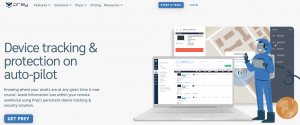Artificial Intelligence (AI) has rapidly transformed our world, offering unprecedented convenience and innovation. However, this technological marvel comes with a growing concern: data privacy. With AI systems becoming increasingly sophisticated, questions about the security and ownership of our personal information are more pressing than ever.
The Data-Hungry Beast
At the core of AI’s capabilities lies its insatiable appetite for data. To learn and improve, AI models require vast amounts of information. This data often includes personal details, from our online search history to our social media interactions. While this data is essential for training AI systems, it also raises significant privacy concerns.
Data Breaches and Unauthorized Access
One of the most obvious threats posed by AI is the increased risk of data breaches. As AI systems handle more sensitive information, the potential for malicious actors to gain unauthorized access to this data grows exponentially. A single breach can compromise the personal information of millions of individuals, leading to identity theft, financial loss, and reputational damage.
Data Profiling and Discrimination
AI algorithms are trained on massive datasets, which may contain biases present in the real world. This can lead to discriminatory outcomes, as AI systems may perpetuate existing inequalities. For example, facial recognition technology is less accurate for people of color, raising concerns about potential misuse by law enforcement agencies.
Surveillance and Privacy Erosion
AI-powered surveillance systems are becoming increasingly common, raising concerns about government overreach and privacy erosion. These systems can track individuals’ movements, analyze their behavior, and even predict their future actions. While intended to enhance public safety, such systems can also be used to suppress dissent and control populations.
Data Ownership and Control
Another critical issue is the question of data ownership and control. As individuals generate vast amounts of data through their online activities, who truly owns this information? AI companies often claim ownership of the data used to train their models, raising questions about the rights of individuals to control their personal information.
Mitigating the Risks
While the challenges posed by AI in data privacy are significant, there are steps that can be taken to mitigate the risks. Governments, businesses, and individuals must work together to develop robust data protection frameworks. This includes enacting comprehensive data privacy laws, investing in cybersecurity, and promoting data literacy among the public.
Individuals can also take steps to protect their privacy, such as limiting the amount of personal information shared online, being cautious about accepting privacy policies and using privacy-enhancing technologies.
In conclusion, AI has the potential to revolutionize our world, but it is essential to address the associated data privacy risks. By understanding the threats and taking proactive measures, we can harness the benefits of AI while safeguarding our fundamental right to privacy.



















